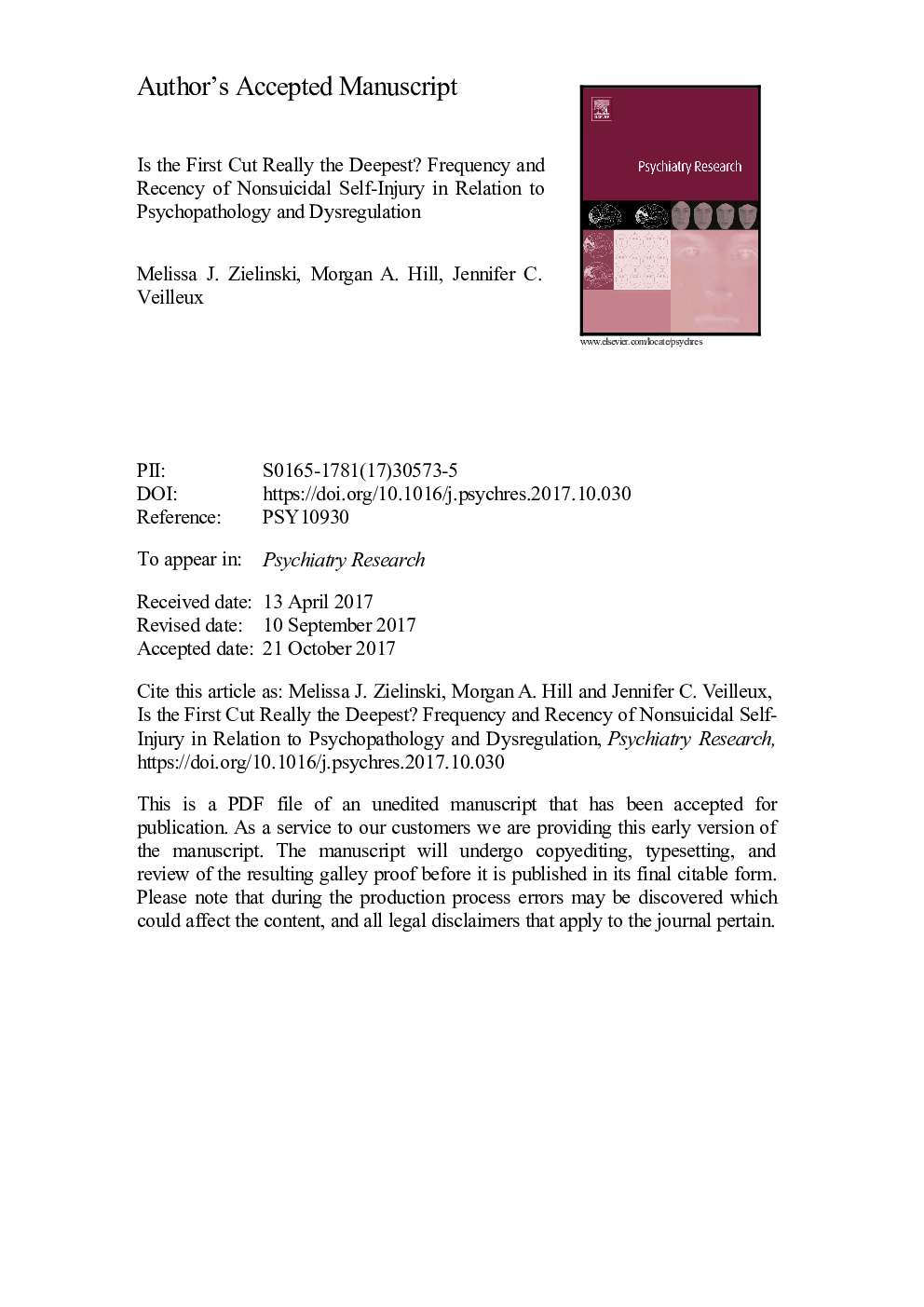| Article ID | Journal | Published Year | Pages | File Type |
|---|---|---|---|---|
| 6812053 | Psychiatry Research | 2018 | 24 Pages |
Abstract
Research on nonsuicidal self-injury (NSSI) has moved beyond examination of factors that associate with the mere presence or absence of the behavior, and into more nuanced examination of which discrete features of NSSI behavior relate to pathology. This study examined two features of NSSI, frequency of occurrence and recency, as cross-sectional predictors of psychopathology in a large community sample of adults with a history of NSSI (N = 315). Results of 2 Ã 2 factorial ANOVAs testing the interactive effects of NSSI frequency (clinical, subclinical) and recency (current, past) revealed that current NSSI was consistently associated with poorer emotional and behavioral health (e.g., greater symptoms of depression, panic, and anxiety, worse emotion regulation, greater alcohol misuse). Results for NSSI frequency were more variable, though preliminary evidence suggested significant interactions of current NSSI and clinical frequency on emotion dysregulation, general anxiety, and panic. Possible clinical and empirical implications of the NSSI disorder frequency criteria proposed in DSM-5 are discussed.
Related Topics
Life Sciences
Neuroscience
Biological Psychiatry
Authors
Melissa J. Zielinski, Morgan A. Hill, Jennifer C. Veilleux,
